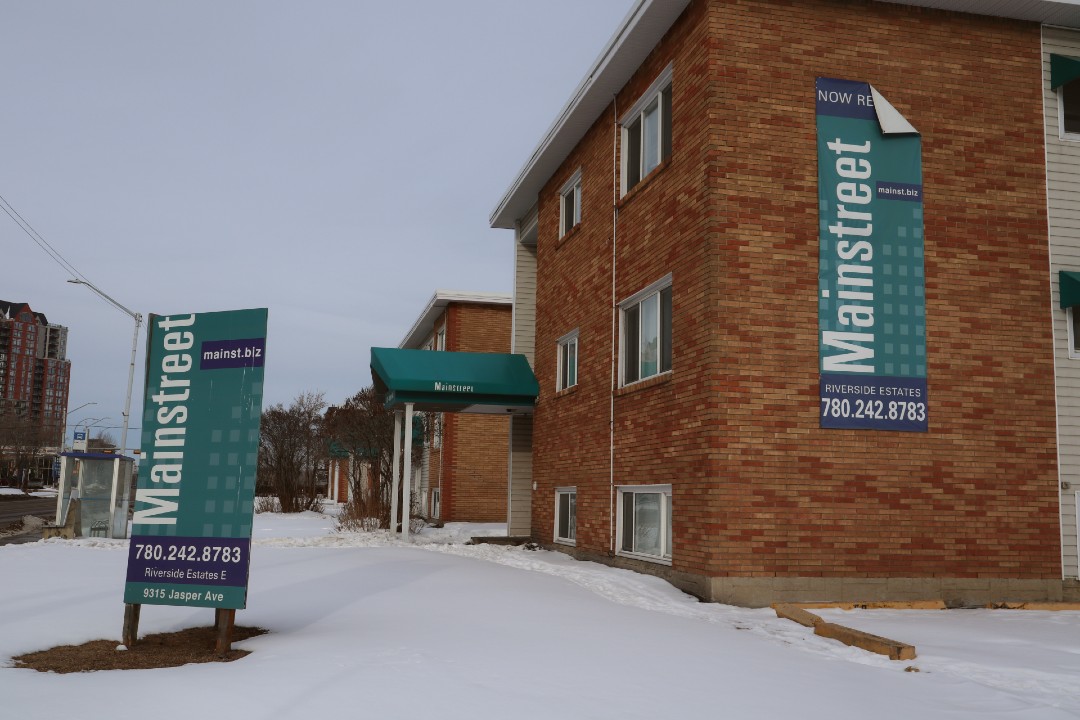Non-profit organizations could slow the loss of inexpensive rental units by purchasing the buildings they are in before real estate investment trusts can, according to a housing expert consulting on Edmonton's affordable housing strategy.
Steve Pomeroy, an industry professor with the Canadian Housing Evidence Collaborative at McMaster University in Hamilton, visited Edmonton in November to discuss the idea of non-profits like HomeEd acquiring older apartment buildings. He said Canadian municipalities and housing non-profits fixate on building new affordable housing while the stock of existing affordable rental units dwindles. These units, which may be in older buildings and in less desireable neighbourhoods, are affordable for those who earn lower incomes without needing government subsidies.
"If you look at the rate at which we're losing those low rent units compared to the rate at which we're adding — at quite a high subsidy cost — new units, we're actually going backwards, and there are fewer housing opportunities for low income folks than there would be otherwise," Pomeroy said. "We've got a big hole in the bucket. We're pouring water in the top in terms of funding for new affordable housing, and for every cup of water we pour in the top, across the country, we're losing 12 cups at the bottom."
But Edmonton is only losing about five "cups," or units, for every new unit that's constructed, Pomeroy said. This makes the city an ideal place to focus on purchasing the buildings these units are in. The naturally occurring affordable units are lost through two main methods, he said. They're occasionally lost when developers raze a three-storey walk-up building, for example, to build a 200-unit tower near transit. But the bigger problem is simple rent inflation. As rents increase faster than wages, housing can move beyond the reach of lower income earners.
If non-profits buy existing units, they can control rents to keep them more attainable to lower income earners. Even if the non-profit were to keep the rents at 2025 rates or only increase them to cover operations, in a few years, those units would be considered affordable housing, Pomeroy said. If non-profits do not buy the buildings, however, real estate investment trusts (REITs) could purchase them and will have no reason to keep rents low. As of 2022, REITs own nearly half of purpose-built rentals in Edmonton.
"Why does the non-profit sector … do the more expensive thing of building the new stuff and taking all the risks and fighting NIMBY and all that?" Pomeroy said. "Why don't we behave like the private guys, but with a social mission rather than a profit motive?"
Pomeroy is working with the City of Edmonton and community housing providers to help them think of acquisition as a viable strategy alongside building new units. Pomeroy has done such work in Ottawa and Hamilton, but needed to tweak his strategy in Edmonton because property values are much lower here than in other Canadian cities. It's possible to buy a 20-unit building here for about $110,000 per door compared to about $200,000 per door in Ontario cities, and rents are about 20% lower in Edmonton, he said. He recommends Edmonton non-profits look at buildings with between 10 and 40 units. Any smaller and the amount of effort wouldn't be worth it, and any larger would be difficult for a non-profit to afford.
The 2024 federal budget included the $1.5 billion Canada Rental Protection Fund so that non-profits and other partners can purchase units and preserve rents in the long term. Pomeroy said details for this funding are not yet known.
Edmonton's population was forecast to grow by 4.2% in 2024, and the influx of new residents is expected to keep driving housing prices up.
"Now is an opportune time to jump in while the prices are still low, before demographic and market pressures drive prices higher, and you won't be able to get as much value for money in five years from now as you can today," Pomeroy said.

